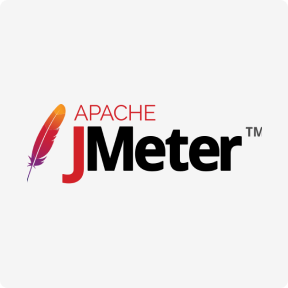With Jenkinsfile, the CD Pipeline is also treated as a part of the application that is versioned, committed, and reviewed like any other piece of code. In this section of the ‘what is Jenkins’ blog, we look at how to do user management in Jenkins, assigning roles to users, and setting up Master and Agents in Jenkins. As developers keep pushing code, Jenkins Agents can run different builds versions of the code for different platforms.

Additionally, all fixes made by CloudBees in the open source code are contributed back to the project – which helps us all to enjoy an ever-higher quality Jenkins experience. You can set up Jenkins to watch for any code changes in places like GitHub, Bitbucket or GitLab and automatically do a build a with tools like Maven and Gradle. You can utilize container technology such as Docker and Kubernetes, initiate tests and then take actions like rolling back or rolling forward in production.
Customizing the execution environment
In recent years, the process of software development has undergone a myriad of changes. With DevOps gaining popularity, organizations have been able to come up with innovative solutions at a never-seen-before pace. Jenkins is a CI tool and a CI/CD tool but it is specifically a “continuous integration” tool, not a “continuous deployment/continuous delivery” tool. Docker containers are lightweight and portable, making them ideal for deploying sandbox environments for testing.
Jenkins offers various build jobs by default, and more are available through plugins. Jenkins is an automation server written in Java that helps build, test, and continually deploy software. The open-source system is currently one of the leading automation servers. Although Jenkins requires scripting some automation steps, the program provides a fast and robust way to systematize the software development lifecycle. When you introduce the concept of continuous integration or deployment, you start to consider tools like Jenkins and Circles. Used by many advanced DevOps teams delivering cutting-edge, cloud-native applications, Jenkins has been around for quite a while.
Declarative Pipeline Example in Jenkins
Then it’s distributed to a central staging system, a pre-production system, or even a production environment when combined. Jenkins is an open-source CI/CD server that helps automate software development and DevOps processes. CI what does jenkins do automatically monitors the commits that each engineer makes. This streamlines the build and verification of code so that testing is not so high-stakes. It’s recognized as a best practice in the software development community.
- Jenkins Master (or Master Node) controls how the respective builds should operate.
- Plugins can also change the way Jenkins looks or add new functionality.
- When reuseNode is set to true, no new workspace will be created, and the current workspace from the current agent will be mounted into the container.
- Also, tests break, meaning when the functionality under a test changes, it needs to be updated.
- All this is solved by Jenkins pipeline in managing a large number of jobs, centralization, easier and cost-effective maintenance, or not much maintenance and simple code to do the deployment.
Jenkinsfiles may be produced using a graphical user interface (GUI) or manually writing code. It automates every stage of the development process, from integration to deployment. Every time a developer pushes a change to the source code repository, it performs https://www.globalcloudteam.com/ a build. The main purpose of Jenkins is to automate the continuous integration and delivery processes in software development. It allows for the seamless building, testing, and deployment of applications, ensuring faster and more efficient development cycles.
Controller (Formerly Master)
Therefore, a build is one run of a defined project with various steps. One node is the central control unit and organizer, known as the controller. Jenkins Tutorial focuses on the distributed architecture of Jenkins and also explains how to create a build in Jenkins. In the Build Actions stage, it compiles and tests the code submitted from the previous stage.

Using CI automation allows you to shorten development release cycles and improve product quality. CI essentially lets your team use machines do what they do best, so humans can do what brings more value to a company. Jenkins frequently updates its plugins, and having the latest version enables you to make your DevOps project more efficient. To update your existing plugin, you need to go to the ‘Manage Plugins’ option again. This time select the ‘Updates’ tab to see which of your plugins need an update and act accordingly.
catchError: Catch error and set build result to failure
Inside() and build() will not work properly with a Docker Swarm server out of the box. By default, the Docker Pipeline plugin will communicate with a local Docker daemon, typically accessed through /var/run/docker.sock. It is possible to pass other arguments to docker build by adding them to the second argument of the build() method. When passing arguments this way, the last value in the string must be the path to the docker file, and should end with the folder to use as the build context. Do not attempt to pass objects defined in Groovy; only Java-defined objects are supported.
Continuous Integration is the most important part of DevOps that is used to integrate various DevOps stages. Jenkins is the most famous Continuous Integration tool, I know you are curious to know the reason behind the popularity of Jenkins, and if Jenkins is easy to learn. I am pretty sure after reading this What is Jenkins blog, all your questions will get answered. For project management, each activity is wrapped as a Jenkins job. For each Jenkins job, success or failure can be identified, and job completion time can be measured. With the uses of Jenkins, one can convert a command prompt code into a GUI button click.
Is Jenkins a Continuous Integration/Continuous Delivery Tool?
The most basic test is whether or not the code actually compiles. Your team can write more complex tests to cover other bases as well, including unit, integration, stress, regression testing, etc. CI is run on a shared server that increases visibility, so all the engineers on a project are aware of changes in the base code day in and day out. In addition, you can configure the server to alert developers when they submit failing code so that they can fix any errors they introduce.

In February 2011, Oracle intended that the development of Hudson should continue hence, Hudson was forked instead of renaming it to Jenkins. Jenkins has an early mover advantage since it has been in development since 2011. Kohsuke Kawaguchi created Jenkins (then called ‘Hudson’) while working at Sun Microsystems. Hudson was created in the summer of 2004 and the first release was in February 2005.
Introduction to Uses of Jenkins
Many paid as well as free courses like these are available on various sites. After you have installed Jenkins, the next major step will be to understand the potential of Jenkins and its scope of work in DevOps. The best possible way to begin the journey would be by reading the official Jenkins DevOps user handbook issued by Jenkins.